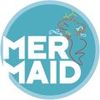Portal:MERMAID/Baltic Sea
Introduction Study Site
A first prototype site is suggested to be Kriegers flak, off-shore located in the shallow intersection between Danish, German and Swedish waters. The site may constitute a primary site for massive development of wind turbine farms and with its location on the pathway for exchange flow between Baltic proper and the North Sea the site is ideally suited for aquaculture, potentially with ample synergies between energy and food production.
Building on this sites unique physical and natural advantages a test system combining gravity based turbine foundations with extensive mariculture, may provide an efficient platform for harnessing natural resources of the Baltic in a sustainable manner. However any man-made construction in the sea potentially may have adverse effects on the vulnerable environment, so part of this basic study will be to investigate, quantify and possibly mitigate such impacts.
Special attention will be given to changes due to obstruction of the estuarine exchange flow, adverse effects of spills from mariculture, but also to the potential positive synergies such as increased local biodiversity due to introduction of hard substrate.
| Baltic Site Factsheet | |
|---|---|
| Geographical location | Kriegers Flak, Western Baltic Sea |
| Offshore distance | 15 km east of the Danish coast |
| Depth | 18 - 40 m |
| Substrate | Sandy layer (thickness of up to 8 m) |
| Surface Water temperature | 0 - 20°C |
| Salinity | 7 - 9 psu (upper 15 - 18 m) |
| Currents | Variable currents driven by wind, density gradients & differences in sea level |
| Mean tidal range | No tides present |
| Wave height | Mostly moderate (1 - 1.5 m) |
| Mean wind speed | 9.5 m/s |
Combination User Functions & Design
An offshore wind farm (75 turbines with a total capacity of 600 MW) is already scheduled for construction in this study site. The MERMAID project explores the theoretical possibility to combine this wind farm, which should be operational in 2020, with additional aquaculture activities:
- Fish farming: Total fish farming capacity is estimated at approximately 100,000 tonnes. Within 3-4 years, 10,000 tonnes of rainbow trout or Atlantic salmon can be produced annually, with a value of € 40 million.
- Seaweed farming: More specifically, the cultivation of Furcellaria sp. is investigated given that this seaweed can be cultured in waters with low salinity, as present in Kriegers Flak.
In the present plans, the wind turbines will be organised in two groups, separated by a sand extraction area. Two separate fish farm facilities are envisaged in between the two groups of turbines so that they are sheltered by the foundations of the monopiles. Each farm consists of 12-14 round cages (45 m in diameter and 12-15 m deep) and a feeding barge. Seaweed farming (Furcellaria sp.) will take place on submerged longlines, which will also reduce the wave impact on the fish cages.
Outlook & Challenges
One of the challenges of this study site is the significant distance to the nearest port. The combination of aquaculture and offshore wind energy will therefore provide significant benefits in terms of transportation and housing. Still, the operational difficulties when combining different users should be taken into account.
The main obstacle to largescale fish farming could be the environmental impact caused by the release of nutrients. In this regard, a study will be conducted to examine the potential of sessile filter feeders living on the turbine foundation to sequester aquaculture waste.
Future use of macro-algal cultures for wave damping will require both innovation and small-scale field testing.

